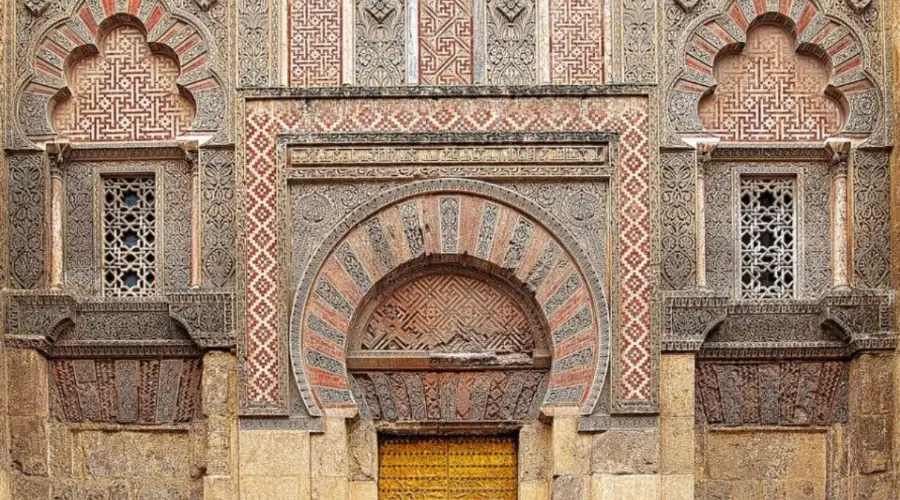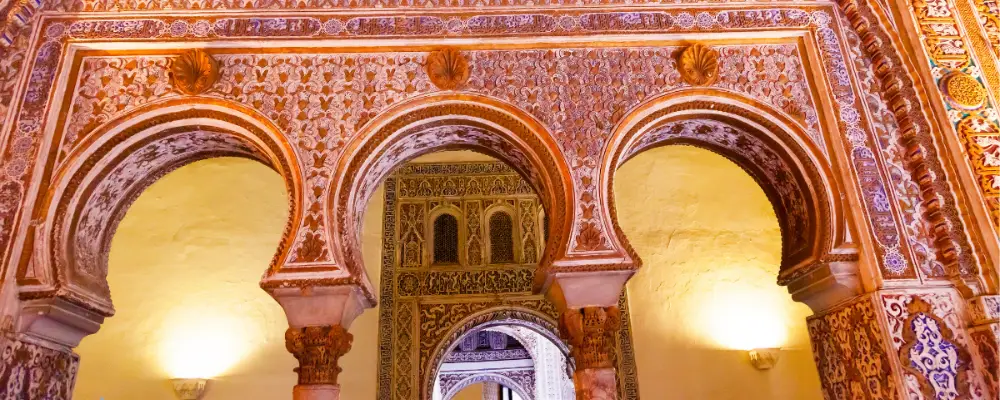Planning to build an iconic structure? If so, you can include horseshoe arch designs in the plan. Yes, the distinct and elegant curve of the horseshoe arch makes it an ideal choice for many buildings worldwide. So far, horseshoe arches have been seen in residential buildings to elevate the interiors, museums, libraries, cultural centres, palaces, forts, and religious structures. From Persian architecture to Western country buildings, horseshoe arches and their adaptations can be found in several architectural styles.
Curious about the horseshoe arch’s historical evolution and modern applications? Explore the following section and know why people choose horseshoe arches over others even after centuries of its invention.
Historical Evolution of the Horseshoe Arch
The horseshoe arch is a distinctive architectural design that is well-known for its unique horseshoe shape. This structure was first found in Persia’s monumental architecture around 879 CE and later, in the 12th to 16th century CE. This design blended Islamic aesthetics with Christian architecture in Spain. Later, it spread throughout Late Roman and Byzantine architecture. It became prominent in Visigoth churches. In the 8th to 9th centuries CE, it became a defining element of Islamic architecture, and then it was found in Spain.
Since the 19th century CE, horseshoe arches have experienced a resurgence in Western architecture, which includes various styles and evolutions. This is how workers construct and design horseshoe arches.
Design and Construction of Horseshoe Arches

Geometry
The span of an arch refers to the horizontal distance between the two supports or the end of the arch. In the horseshoe arch, the span is larger than the height, which helps to distribute the weight evenly.
Load distribution
The arch primarily uses compression forces, which transfer weight down and outward for better support. Lateral forces at the base are managed with internal ties or external supports like abutments.
Materials
The choices of materials influence both the appearance and strength of the arch. However, horseshoe arches do not require special materials to construct; workers can use brick, stones, or concrete to build these arches as all of them can handle the compression forces well.
Construction Techniques
Preparation
Workers start by marking the springing line, where the arch rises from its supports. This line serves as a guide for construction. Then, they establish a vertical centerline for symmetry and alignment, ensuring a strong foundation for maintaining accuracy throughout the process.
Voussoirs Arrangements
Wedge-shaped stones or bricks (voussoirs) are carefully arranged to form a stable structure. Each voussoir is precisely cut and fitted to ensure even weight distribution, and the keystone locks all blocks together.
Temporary Support
During construction, temporary wooden supports (centering) hold the arch in place until the keystone is set. These supports must be robust enough to support the arch’s weight, ensuring stability during the building process.
Finishing Touches
Once the keystone and voussoirs are securely in place, remove the temporary centering to allow the arch to become self-supporting. Focus on adding aesthetic enhancements like plaster, decorative tiles, or carvings, which improve visual appeal and protect against environmental wear.
Load Distribution in Horseshoe Arches
Load distribution is the most important thing to consider when building any structure. It means distributing the forces and weight across the different parts of the structure. It ensures that the building is safe, stable, and strong. Now, let’s see how the construction team ensures even load distribution in horseshoe arches.
Even material distribution: Reinforced concrete and steel must be evenly distributed to maintain similar load distribution efficiency throughout the length of the horseshoe arch structures.
Compression forces: Compressive forces that act on the arch are distributed outwards to the supporting piers or walls on the side of the horseshoe curve.
Load path: The load path in a horseshoe arch guides forces outward and downward into the supporting structures. The curvature ensures an even distribution and allows the arch to handle significant vertical and lateral pressures.
Lateral thrust: Horseshoe arches also create lateral thrust at their base. To prevent collapse, this horizontal force needs to be counteracted by robust supports, like columns or walls.
The right choice of materials and design helps manage these forces effectively and maintain the structure’s stability.
Modern Applications and Revivals of the Horseshoe Arch
The horseshoe arch’s versatile and enduring appeal makes it an excellent choice for contemporary architecture as people often like to blend traditional designs with a touch of modernity. Including the striking horseshoe arches in new buildings adds a unique charm. However, modern adaptations of horseshoe arches often focus on sustainability.
The integration of energy-efficient technologies and sustainable materials with contemporary architectural trends ensures ecological responsibility while preserving cultural identity. Horseshoe arches are often seen in Indian historical buildings, such as Fatehpur Sikri and Qutb Minar Complex. However, in recent days, many notable buildings have also included horseshoe arches, such as the National Museum of India in New Delhi and the National Museum of Qatar in Doha.
Conclusion
In the end, combining historical elegance with modern aesthetics and functionalities creates a vibrant environment around the living spaces. As owners, you need to approach the best and most experienced construction team as their assistance becomes mandatory for residential or commercial buildings. Thus, ensure you find the right construction team that is well-versed in building every structure, whether modern or traditional.
FAQs
The Horseshoe arch’s key components are voussoirs, keystones, intrados, extrados, springing line, haunch, span, abutments, and rise. These key components work together to ensure structural stability and iconic appearance, which makes it functional and visually striking.
Other than their appealing look, horseshoe arches have significant structural advantages, such as:
1. Improved load distribution
2. Increased stability
3. Resistance to horizontal forces
4. Adaptability to larger openings
5. Enhanced durability
6. Seamlessly integrates with other designs
7. Efficient material usage and adaptations to various architectural styles
Here are some iconic buildings that feature stunning horseshoe arches.
1. The Great Mosque Of Cordoba, Alhambra, Giralda Tower and Alcazar of Seville, Spain.
2. Fatehpur Sikri and Qutb Minar Complex, India.
3. Umayyad Mosque, Syria.
4. Hassan II Mosque, Morocco.

